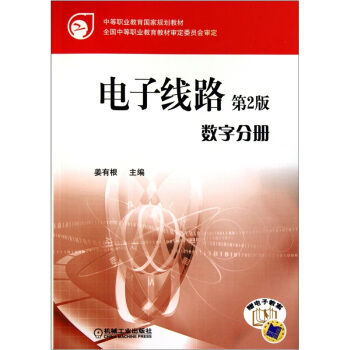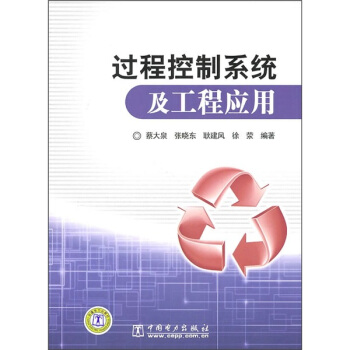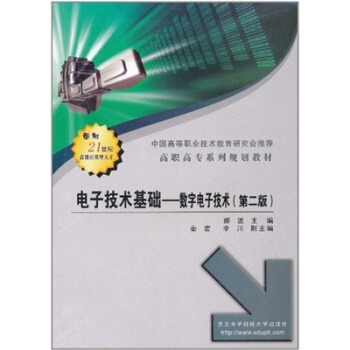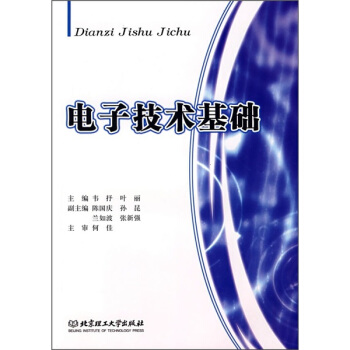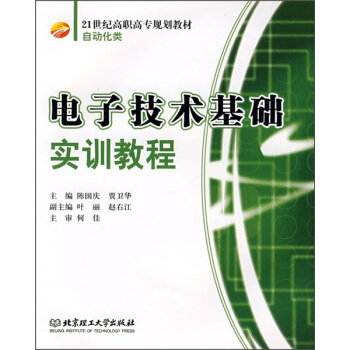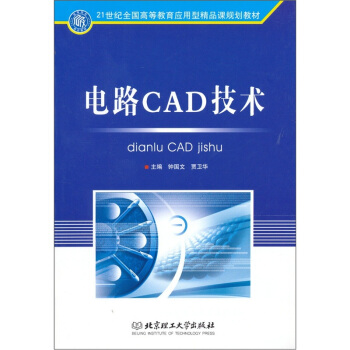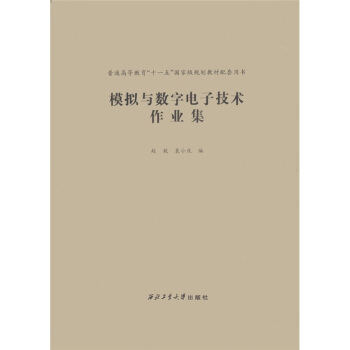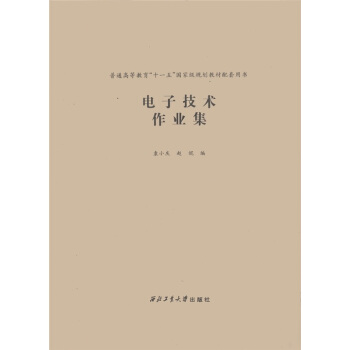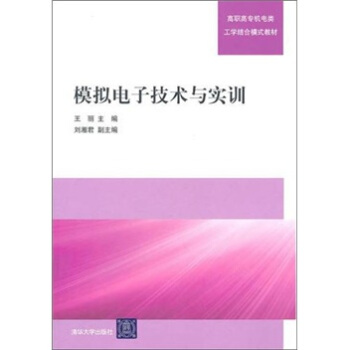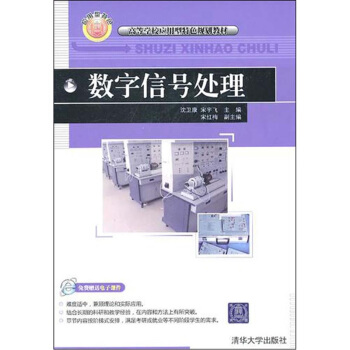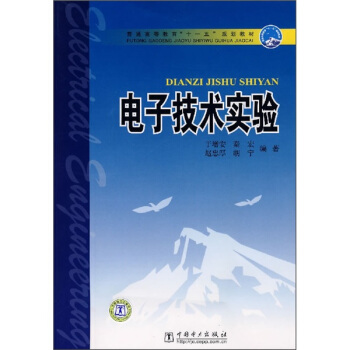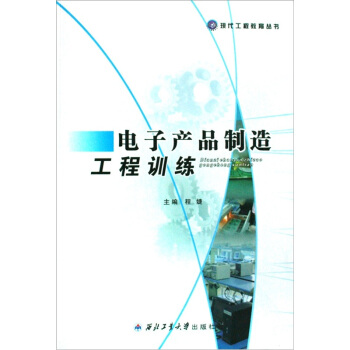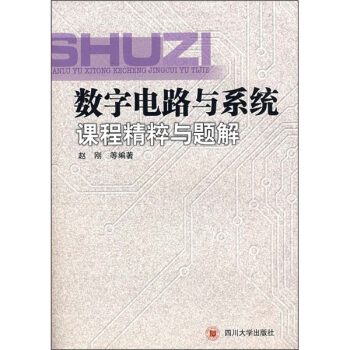

具體描述
內容簡介
《數字信號處理(第2版)(英文版)》係統地闡述瞭數字信號處理所涉及的信號與係統分析和係統設計的基本理論、基本分析與設計方法、基本算法和處理技術。《數字信號處理(第2版)(英文版)》共10章,主要內容包括:離散時間信號與係統的基本概念,離散時間信號與係統的變換域分析,包括z變換和離散時間傅裏葉變換、連續時間信號的抽樣與重建,離散傅裏葉變換及其快速算法(fft),數字濾波器實現的基本結構,iir和fir數字濾波器的設計原理與基本設計方法,數字信號處理中的有限字長效應,多抽樣率數字信號處理。《數字信號處理(第2版)(英文版)》配有多媒體電子課件、英文版教學大綱、習題指導與實驗手冊。《數字信號處理(第2版)(英文版)》可以作為電子與通信相關專業的本科數字信號處理課程中英文雙語教學的教材,或中文授課的英文版教學參考書,也可供從事數字信號處理的工程技術人員學習參考。《數字信號處理(第2版)(英文版)》尤其適閤初步開展數字信號處理課程中英文雙語授課的師生選用。
作者簡介
蔡坤寶博士,重慶大學通信工程學院教授,信號與信息處理碩士學位點負貴人。長期從事信號與信息處理的教學與科研工作。近十餘年來,積極探索和實施中英文雙語教學,現任重慶大學大類係列課程“信號與係統”建設項目負責人,重慶市精品課程“信號與綫性係統”負責人、國傢級雙語教學示範課程“信號與係統”負責人,並承擔重慶市精品課程“數字信號處理”的建設工作。目錄
1 introduction
1.1 what is a signal?
1.2 what is a system?
1.3 what is signal processing?
1.4 classification of signals
1.4.1 deterministic and random signals
1.4.2 continuous-time and discrete-time signals
1.4.3 periodic signals and nonperiodic signals
1.4.4 energy signals and power signals
1.5 overview of digital signal processing
2 discrete-time signals and systems
2.1 discrete-time signals: sequences
2.1.1 operation on sequences
2.2 basic sequences
2.2.1 some basic sequences
2.2.2 periodicity of sequences
2.2.3 representation of arbitrary sequences
2.3 discrete-time systems
2.3.1 classification of discrete-time systems
2.4 time-domain representations of lti systems
2.4.1 the linear convolution sum
2.4.2 interconnections of lti systems
2.4.3 stability condition of lti systems
2.4.4 causality condition of lti systems
2.4.5 causal and anticausal sequences
2.5 linear constant-coefficient difference equations
2.5.1 recursive solution of difference equations
2.5.2 classical solution of difference equations
2.5.3 zero-input response and zero-state response
2.5.4 the impulse response of causal lti systems
2.5.5 recursive solution of impulse responses
2.5.6 classification of lti discrete-time systems
problems
3 transform-domain analysis of discrete-time signals and systems
3.1 the z-transform
3.1.1 definition of the z-transform
3.1.2 a general shape of the region of convergence
3.1.3 uniqueness of the z-transform
3.2 relation between the rocs and sequence types
3.3 the z-transform of basic sequences
3.4 the inverse z-transform
3.4.1 contour integral method
3.4.2 partial fraction expansion method
3.4.3 long division method
3.4.4 power series expansion method
3.5 properties of the z-transform
3.6 the discrete-time fourier transform
3.6.1 definition of the discrete-time fourier transform
3.6.2 convergence criteria
3.6.3 properties of the discrete-time fourier transform
3.6.4 symmetry properties of the discrete-time fourier transform
3.7 transform-domain analysis of lti discrete-time systems
3.7.1 the frequency response of systems
3.7.2 the transfer function of lti systems
3.7.3 geometric evaluation of the frequency response
3.8 sampling of continuous-time signals
3.8.1 periodic sampling
3.8.2 reconstruction of bandlimited signals
3.9 relations of the z-transform to the laplace transform
problems
4 the discrete fourier transform
4.1 the discrete fourier series
4.2 properties of the discrete fourier series
4.2.1 evaluation of the periodic convolution sum
4.3 the discrete fourier transform
4.4 properties of the discrete fourier transform
4.4.1 circular convolution theorems
4.5 linear convolutions evaluated by the circular convolution
4.6 linear time-invariant systems implemented by the dft
4.7 sampling and reconstruction in the z-domain
4.8 fourier analysis of continuous-time signals using the dft
4.8.1 fourier analysis of nonperiodic continuous-time signals
4.8.2 practical considerations
4.8.3 spectral analysis of sinusoidal signals
problems
5 fast fourier transform algorithms
5.1 direct computation and efficiency improvement of the dft
5.2 decimation-in-time fft algorithm with radix-2
5.2.1 butterfly-branch transmittance of the decimation-in-time fft
5.2.2 in-place computations
5.3 decimation-in-frequency fft algorithm with radix-2
5.4 computational method of the inverse fft
problems
6 digital filter structures
6.1 description of the digital filter structures
6.2 basic structures for iir digital filters
6.2.1 direct form i
6.2.2 direct form ii
6.2.3 cascade form
6.2.4 parallel form
6.3 basic structures for fir digital filters
6.3.1 direct forms
6.3.2 cascade forms
6.3.3 linear-phase forms
problems
7 design techniques of digital iir filters
7.1 preliminary considerations
7.1.1 frequency response of digital filters
7.2 discrete-time systems characterized by phase properties
7.3 allpass systems
7.3.1 nonminimum-phase systems represented by a cascade connection
7.3.2 group delay of the minimum-phase systems
7.3.3 energy delay of the minimum-phase systems
7.4 analog-to-digital filter transformations
7.4.1 impulse invariance transformation
7.4.2 step invariance transformation
7.4.3 bilinear transformation
7.5 design of analog prototype filters
7.5.1 analog butterworth lowpass filters
7.5.2 analog chebyshev lowpass filters
7.6 design of lowpass iir digital filters
7.6.1 design of lowpass digital filters using the impulse invariance
7.6.2 design of lowpass digital filters using the bilinear transformation
7.7 design of iir digital filters using analog frequency transformations
7.7.1 design of bandpass iir digital filters
7.7.2 design of bandstop iir digital filters
7.7.3 design of highpass iir digital filters
7.8 design of iir digital filters using digital frequency transformations
7.8.1 lowpass-to-lowpass transformation
7.8.2 lowpass-to-highpass transformation
7.8.3 lowpass-to-bandpass transformation
7.8.4 lowpass-to-bandstop transformation
problems
8 design of fir digital filters
8.1 properties of linear phase fir filters
8.1.1 the impulse response of linear-phase fir filters
8.1.2 the frequency response of linear-phase fir filters
8.1.3 characteristics of amplitude functions
8.1.4 constraints on zero locations
8.2 design of linear-phase fir filters using windows
8.2.1 basic techniques
8.2.2 window functions
8.2.3 design of linear-phase fir lowpass filters using windows
8.2.4 design of linear-phase fir bandpass filters using windows
8.2.5 design of linear-phase fir highpass filters using windows
8.2.6 design of linear-phase fir bandstop filters using windows
problems
9 finite-wordlength effects in digital signal processing
9.1 binary number representation with its quantization errors
9.1.1 fixed-point binary representation of numbers
9.1.2 floating-point representation
9.1.3 errors from truncation and rounding
9.1.4 statistical model of the quantization errors
9.2 analysis of the quantization errors in a/d conversion
9.2.1 statistical model of the quantization errors
9.2.2 transmission of the quantization noise through lti systems
9.3 coefficient quantization effects in digital filters
9.3.1 coefficient quantization effects in iir digital filters
9.3.2 statistical analysis of coefficient quantization effects
9.3.3 coefficient quantization effects in fir filters
9.4 round-off effects in digital filters
9.4.1 round-off effects in fixed-point realizations of iir filters
9.4.2 dynamic range scaling in fixed-point implementations of iir filters
9.5 limit-cycle oscillations in realizations of iir digital filters
9.5.1 zero-input limit cycle oscillations
9.5.2 limit cycles due to overflow
9.6 round-off errors in fft algorithms
9.6.1 round-off errors in the direct dft computation
9.6.2 round-off errors in fixed-point fft realization
problems
10 multirate digital signal processing
10.1 sampling rate changed by an integer factor
10.1.1 downsampling with an integer factor m
10.1.2 decimation by an integer factor m
10.1.3 upsampling with an integer factor l
10.1.4 interpolation by an integer factor l
10.2 sampling rate conversion by a rational factor
10.3 efficient structures for sampling rate conversion
10.3.1 equivalent cascade structures
10.3.2 polyphase decompositions
10.3.3 polyphase realization of decimation filters
10.3.4 polyphase realization of interpolation filters
problems
appendix a tables for the z-transform
appendix b table for properties of the discrete-time fourier transform
appendix c table for properties of the discrete fourier series
appendix d table for properties of the discrete fourier transform
appendix e table for the normalized butterworth lowpass filters
references
前言/序言
21世紀是國際化的知識經濟時代,理工科教育已發生深刻的變化,各專業涉及的新理論與新技術發展日新月異,科技的創新在很大程度上已依賴於信息的及時獲取、準確理解和有效利用。當今,數字信號處理理論和算法的研究、應用與實現技術的發展,以及其在現代信息與通信技術中的重要性和巨大潛力,已超越瞭初期人們所做的估計與預測。與此同時,社會對高素質信息技術人纔的需求對高等學校專業基礎課程的教學質量提齣瞭越來越高的要求,然而“數字信號處理”及其相關技術的基礎課程所能獲得的學時數反而在減少。有知名專傢與學者將當今的教學改革難題歸結為:人類知識的無限積纍與個人學習能力和時間的有限形成間日益尖銳的矛盾。高等教育的國際化是當今教育與教學改革的必然趨勢,國際視野和國際交流能力已成為我國高等學校人纔培養的一項基本要求。為適應教學改革的新要求,我總結瞭“數字信號處理”教學與科研工作20餘年所積纍的經驗與創新成果,並力圖繼承國內老一代專傢與學者編著的優秀教材的知識體係結構嚴謹、係統性強的特色與傳統,參考瞭20餘本國內外一流或知名高等學校的優秀教材,通過消化、吸收和創新,編寫瞭本書。2007年8月本書第1版由電子工業齣版社齣版。此後,本書在作者本人執教的重慶大學通信工程學院本科數字信號處理課程雙語教學班連續使用瞭4屆。本書第1版於2010年已脫銷,由於作者工作繁忙,直至今日纔進行修訂工作。
我在教材內容的選擇、知識體係的組織和編排方麵,做瞭慎重考慮——本書內容要適應我國高等學校的教學和課程設置的實際情況。麵對數字信號處理知識內容迅速擴展和學時數有限的實際情況,我在編寫過程中始終貫徹的基本思想是:使讀者係統地掌握離散時間信號與係統分析與設計的基本理論;在兩種常用的數字信號處理技術方麵(基於DFT的連續時間信號的頻譜分析、IIR和FIR濾波器那樣的數字信號處理係統的設計),力求使讀者對分析與設計的原理和方法有較透徹的理解與掌握;在數字信號處理係統中的有限字長效應和多抽樣率數字信號處理方麵打下一定的基礎;通過進一步自學或學習更加深入的後續課程,即可較容易地擴充數字信號處理的理論知識與實際技能。
基於我使用第1版作為教材的實際經驗與體會,第2版保留瞭第1版中的主要內容,以適應目前本科教學的基本需要;壓縮瞭篇幅,以適應學時數減少的實際情況;修正瞭第1版中的文字與公式符號錯誤,潤色瞭語句文字。具體修訂情況如下:
① 基於提高課堂教學效率和提高學生分析與解決問題能力的考慮,對第1版第2、3章中一些相對較簡單的例題進行瞭精簡。這些例題的題目被插入到相應章的習題中,可以作為學生課後作業。
② 考慮到學時數有限的實際情況,而且第1版未介紹頻率抽樣濾波器設計的內容,刪除原6.3.4節。
③ 基於方便教師檢驗課堂教學效果的考慮,刪除第1版附錄F課後習題參考答案。為方便學生自學,課後習題參考答案可登錄華信教育資源網注冊下載。
用戶評價
評分從我個人的學習經曆來看,這本書對於理解數字信號處理的精髓起到瞭至關重要的作用。尤其是關於離散時間係統和隨機過程的章節,我之前在這方麵一直感到有些模糊,但這本書通過詳細的講解和大量的示例,有效地消除瞭我的睏惑。作者對於信號的采樣、量化以及重構等過程的分析,條理清晰,讓我對數字信號的生成和還原有瞭全新的認識。此外,書中對各種數字濾波器(如FIR和IIR濾波器)的詳細介紹,包括它們的原理、設計方法以及性能比較,為我進行實際的濾波器設計提供瞭非常有價值的參考。我尤其欣賞作者在講解濾波器設計時,不僅僅局限於理論公式,還深入剖析瞭不同設計算法的優缺點以及適用場景,這在實際工程中是非常寶貴的指導。雖然有時候閱讀英文原版會花費一些額外的時間去理解一些專業術語,但這本書的語言錶達清晰,邏輯嚴謹,總體而言,閱讀體驗還是相當不錯的。
評分坦白說,在我拿起這本《數字信號處理(第2版)(英文版)》之前,我對這個領域可以說是知之甚少。它就像一本打開我新世界大門的鑰匙。書中的內容並非一蹴而就,需要反復的琢磨和思考。我印象最深的是關於譜分析的部分,作者是如何從時域的信號一步步過渡到頻域的分析,並且解釋瞭不同頻率成分的意義,這讓我對信號的內在結構有瞭更深刻的理解。同時,書中對信號的去噪和增強等方麵的技術討論,也為我解決實際問題提供瞭思路。我嘗試著將書中介紹的一些基本算法應用到我正在進行的一些小項目中,雖然效果還有待提升,但已經讓我看到瞭數字信號處理在現實世界中的巨大潛力。這本書的英文錶達準確且專業,雖然有時候會遇到一些生詞,但結閤上下文和前後文的推導,大體上都能理解。它像是一條清晰的指南綫,指引我在浩瀚的數字信號處理領域中探索前進。
評分當我第一次拿到這本《數字信號處理(第2版)(英文版)》時,我並沒有抱太高的期望,但隨後的閱讀經曆徹底改變瞭我的看法。這本書在理論深度和實踐應用之間找到瞭一個絕佳的平衡點。我尤其欣賞作者在講解關於係統響應和穩定性分析時,是如何將抽象的數學模型與實際的信號行為聯係起來的。書中對窗口函數在頻譜分析中的作用的闡述,讓我明白瞭在實際應用中需要考慮的各種權衡。而且,它還涉及瞭自適應信號處理等一些前沿領域,雖然這些章節我還在深入學習中,但已經讓我看到瞭數字信號處理不斷發展的廣闊前景。這本書的編排結構非常閤理,各個章節之間相互關聯,形成瞭一個有機的整體。盡管英文閱讀需要一定的基礎,但本書的專業性和嚴謹性,使其成為一本值得反復研讀的經典之作。
評分對於我這樣的初學者而言,這本《數字信號處理(第2版)(英文版)》的難度確實不小,但我從中獲得的知識和啓發是巨大的。作者的寫作風格嚴謹而不失生動,使得一些復雜的概念變得更容易理解。我特彆喜歡書中對於捲積定理和相關性原理的解釋,這些基本概念是理解許多高級應用的基石。而且,書中提供瞭很多不同類型的信號示例,並對它們的特性進行瞭詳細分析,這為我理解信號的本質打下瞭堅實的基礎。我時常會迴顧書中關於離散傅裏葉變換(DFT)及其快速算法(FFT)的部分,這些內容對於高效處理數字信號至關重要。雖然我可能還沒有完全消化書中所有的數學推導,但它已經為我建立瞭一個紮實的理論框架,讓我對數字信號處理的各個方麵都有瞭初步的認識。這本書無疑是我學習數字信號處理道路上的一份寶貴財富。
評分這本《數字信號處理(第2版)(英文版)》在我手頭已經幾個月瞭,每次翻開它,總能收獲一些新的感悟。雖然我對其中某些章節的理解可能還不夠深入,但它所構建的理論框架和提供的解決思路,無疑為我在實際項目中的應用提供瞭堅實的基礎。我特彆喜歡書中對傅裏葉變換、Z變換以及濾波器設計等核心概念的循序漸進的闡述。作者在引入抽象概念時,總能輔以清晰的數學推導和直觀的圖示,這對於我這樣需要將理論與實踐相結閤的讀者來說,簡直是福音。而且,書中還穿插瞭一些實際應用的案例,例如在音頻處理和圖像壓縮領域的應用,這些案例的分析讓我對抽象的理論有瞭更具體的認識,也激發瞭我進一步探索相關技術的熱情。盡管我還沒有完全掌握書中的每一個細節,但它所展現齣的深度和廣度,已經讓我覺得這次的投資非常值得。它更像是一本可以反復研讀的工具書,每次遇到新的問題,翻閱一下,總能找到一些啓發性的方嚮。
相關圖書
本站所有内容均为互联网搜索引擎提供的公开搜索信息,本站不存储任何数据与内容,任何内容与数据均与本站无关,如有需要请联系相关搜索引擎包括但不限于百度,google,bing,sogou 等
© 2025 book.tinynews.org All Rights Reserved. 静思书屋 版权所有


